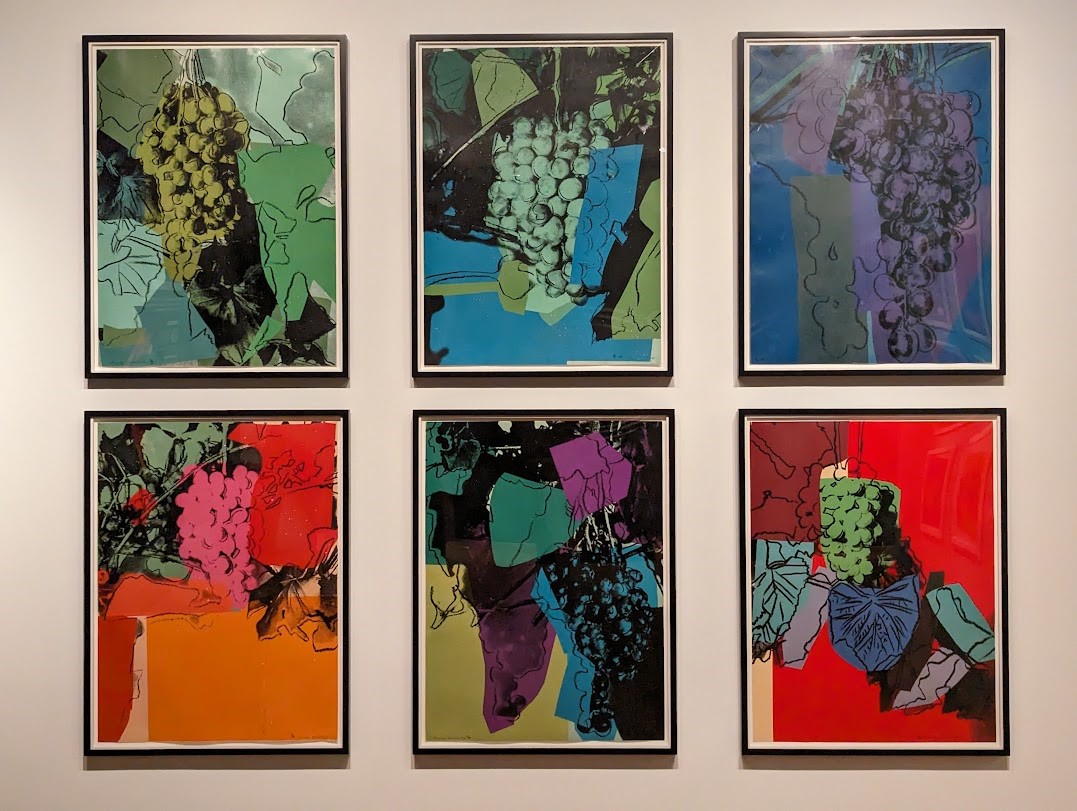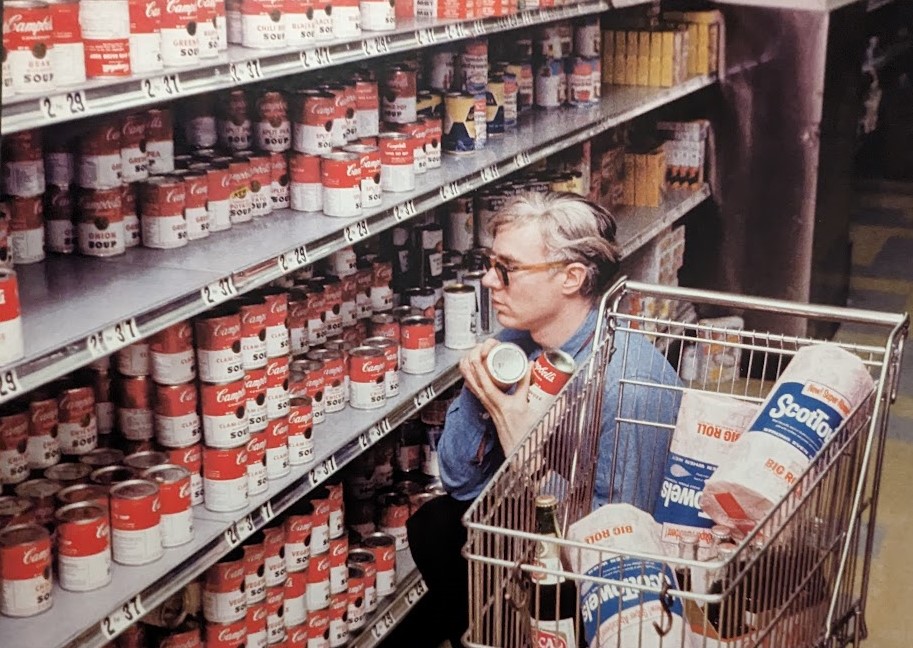Andy Warhol (American, 1928-1987), magnified popular American culture in his art, and in so doing he himself became a paradigm of popular culture. “His pop sensibility embraced an anything-can-be-art approach, appropriating images, ideas and even innovation itself,” according to curatorial signage at Andy Warhol Portfolios: A Life in Pop.
This exhibition, on through September 8th, 2024 at the Baker Museum – Artis Naples, in Naples, FL, features a selectively curated series of Warhol’s photographic silkscreen prints, mostly from the 1970s and ’80s, on loan from the Bank of America Collection.
It was his use of color — surprising juxtapositions of complementary and analagous colors — that took Warhol’s interpretations of the mundane to a novel realm of pictorial expression.
Warhol’s personal library, filled with books on the great modern colorists, revealed his extreme interest in color. He worked endlessly with assistants and printers to produce different combinations of colors in one series after another. A notable example: for the Sunset series he originally created 632 prints of the sun, each with a different combination of colors.
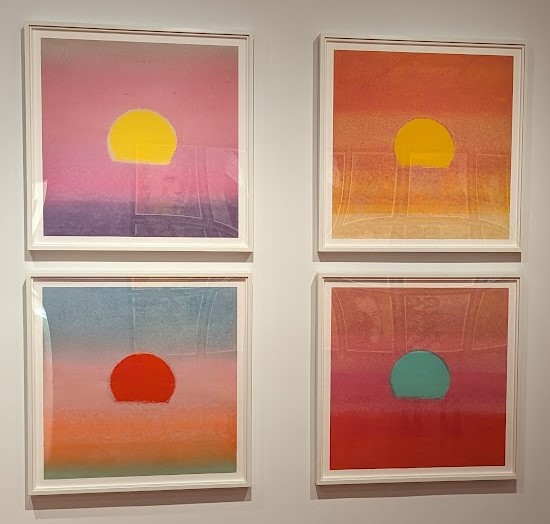
In 1975, Wahol produced a wine label for Château Mouton Rothschild, and subsequently he created a series of prints repeating representations of grapes. Each image shows a different variety of grape, printed with abstract blocks of contrasting colors.
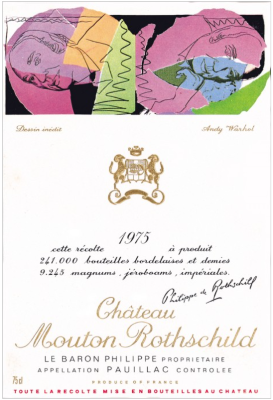
Grapes was part of several still life series he produced, introducing a new approach to the traditional genre. “Warhol eschewed convention by taking a classical theme and applying a modern perspective, abstracting the image by imposing several blocks of color.” Grapes was the first set of prints that he embellished with “diamond dust”. He originally tried to use actual crushed diamonds, but that didn’t give him the sparkle-effect he had hoped for. He chose instead to use crushed glass, but called it diamond dust nonetheless.
“You need to let the little things that would ordinarily bore you suddenly thrill you.”
Andy Warhol
Another series, Space Fruit, exemplifies Warhol’s move away from commercial products to what might be thought of as a more traditional art historical genre. “Still lifes by their very nature are choreographed compositions focusing on shape, color, space and oftentimes symbolism,” adjacent curatorial text tells us. Is it any wonder the genre appealed to him?!
But genre is where Warhol’s nod to tradition ends. By individualizing these common still life objects, conflating shadow, line and intense color, the everyday familiarity of Warhol’s fruits is lost in Pop vibrancy.
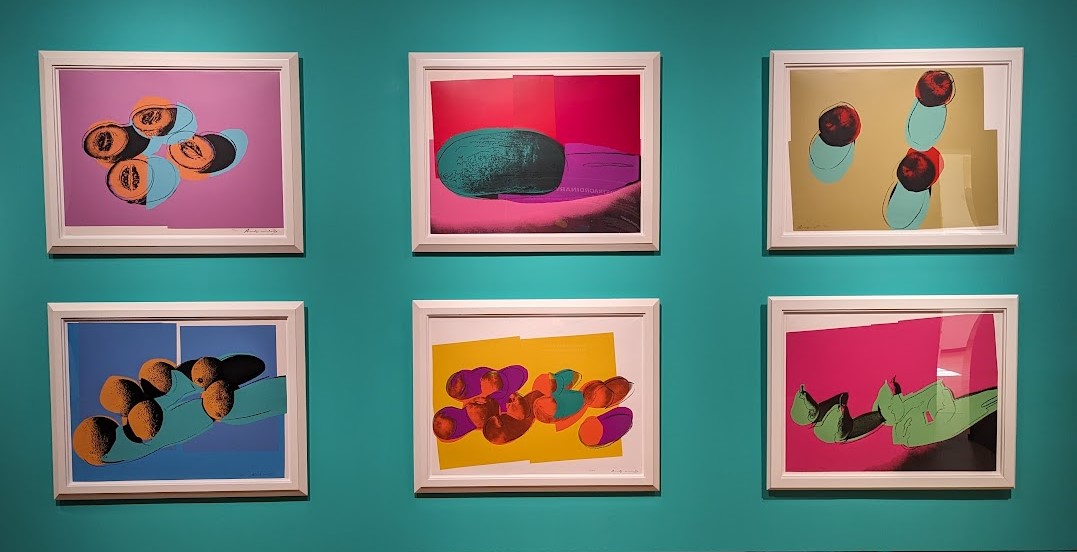
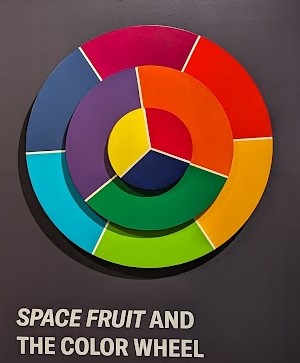
You might think you know Andy Warhol, but unless you’ve seen other dedicated exhibitions of his work, there could be some surprises here. Yes, we’ve got soup … a whole room full, in fact. And portraits of celebrities. And the famous stylized Flowers series (1970). …
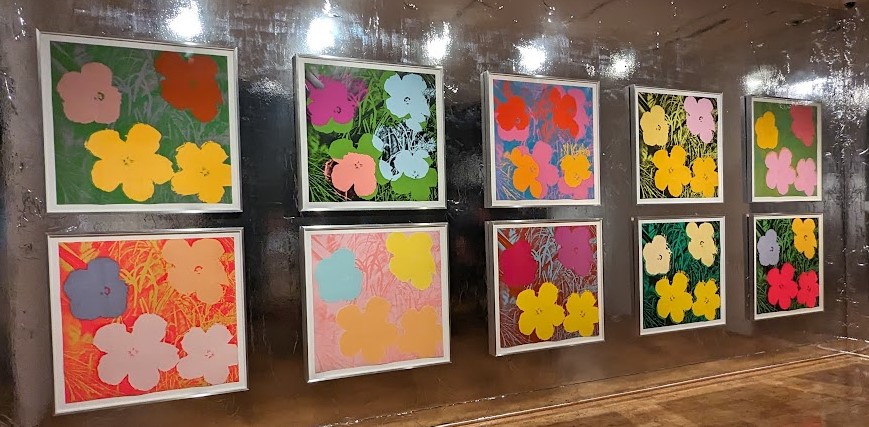
But the 1985 Vesuvius series, for example, was new to me, despite Warhol having made 57 uniquely colored trial prints using the Vesuvius silkscreens.

And — surprising in their restraint — a series of prints called Ikebana. Based on pictures from books about Japanese flower arranging, each print is unique and individually hand-colored..
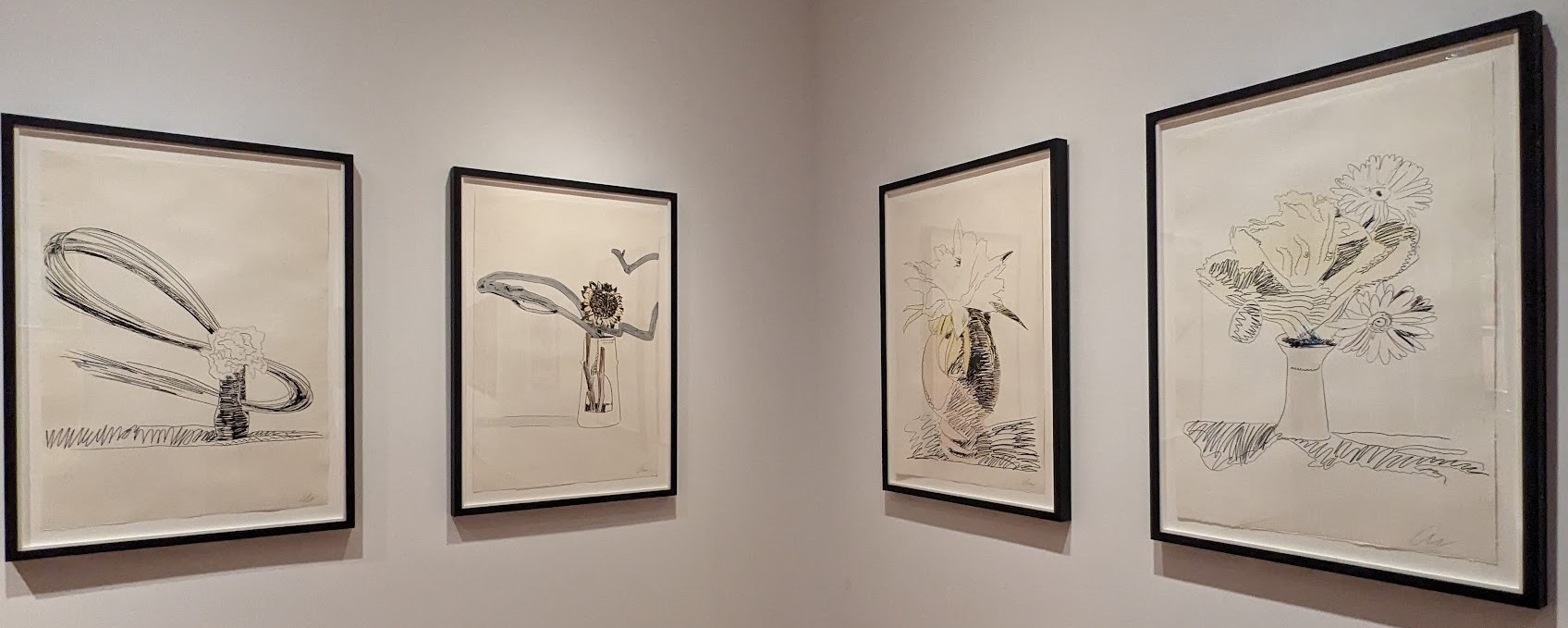
Then there’s a brilliant group of Ten Portraits of Jews of the Twentieth Century (1980). The series portrays, clockwise from top left: Franz Kafka, Gertrude Stein, Martin Buber, Albert Einstein, Louis Brandeis, Sigmund Freud, Sarah Bernhardt, Golda Meir, The Marx Brothers, and George Gershwin.
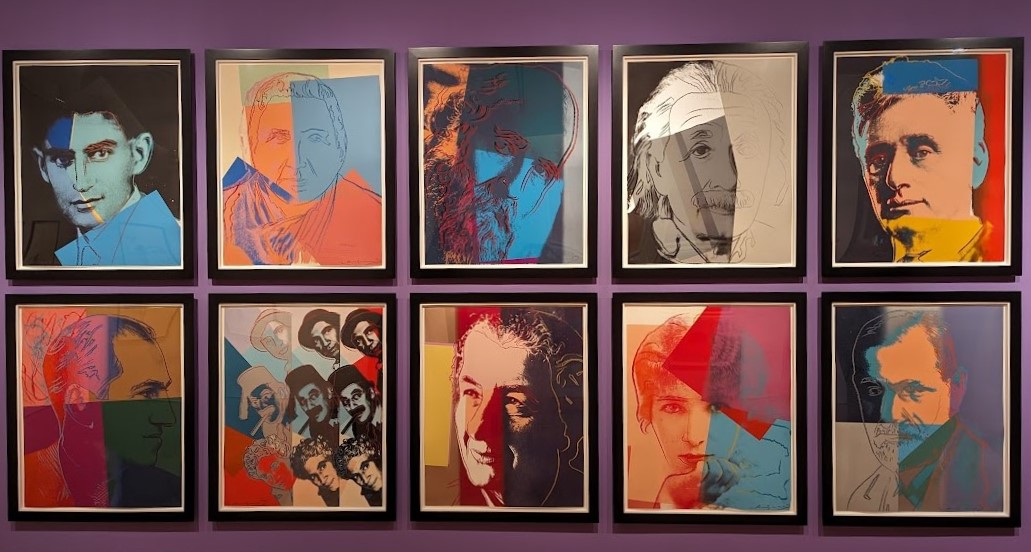
While a few more series are included in the show, I’ll wrap this up with mention of one other favorite, Endangered Species. In his twenties, Warhol was trying to make ends meet by working as a freelance children’s book illustrator for Doubleday. When he was 26, with his mother Julia he wrote and illustrated a book ungrammatically titled, 25 Cats Name Sam and One Blue Pussy. He’d grown up with pets and later said, “I never met an animal I didn’t like.” His love and concern for animals extended to the wild — so much so that he left some of his estate for habitat conservation.
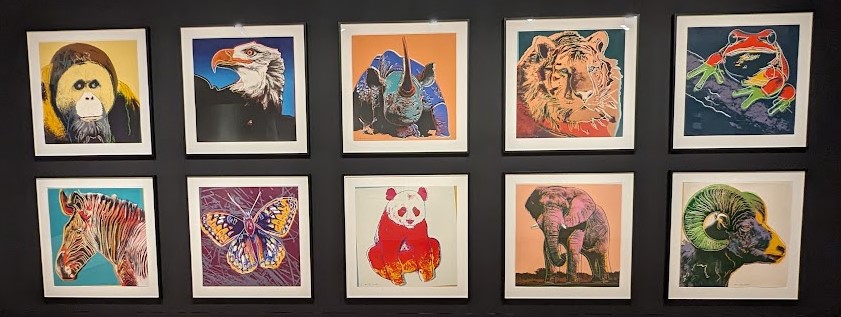
Using images he found in magazines and newspapers, in the early 1980s he made a series of 10 photographic silkscreened prints of endangered animals. The complete set of the Endangered Species series was exhibited at the Museum of Natural History in NY, as well as other natural history museums, and the proceeds of the sale of a select number of prints were donated to various wildlife organizations.
Don’t think about making art, just get it done. Let everyone else decide if it’s good or bad, whether they love it or hate it. While they’re deciding, make even more art.”
Andy Warhol
Hmmm … maybe it’s time to plan a little trip …
ArtGeek recommends Andy Warhol Portfolios: A Life in Pop
Our visit to the Baker was a very satisfying museum experience! Although not extravagant, the Baker Museum venue is pleasant, the lighting is good, and the curatorial text for this exhibition better than I’ve seen in many major art museums.
5833 Pelican Bay Boulevard, Naples, FL
239-597-1900
Art Things Considered is an art and travel blog for art geeks, brought to you by ArtGeek.art — the only search engine that makes it easy to discover more than 1700 art museums, historic houses & artist studios, and sculpture & botanical gardens across the US.
Just go to ArtGeek.art and enter the name of a city or state to see a comprehensive interactive listing of museums in the area. All in one place: descriptions, locations and links.
Use ArtGeek to plan trips and to discover hidden gem museums wherever you are or wherever you go in the US. It’s free, and it’s easy and fun to use!
© Arts Advantage Publishing, 2024
